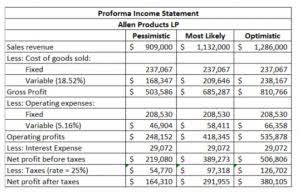
Understanding the industry’s norms and dynamics is crucial when interpreting retained earnings. For example, if you have a high-interest loan, paying that off could generate the most savings for your business. On the other hand, if you have a loan with more lenient terms and interest rates, it might make more sense to pay that one off last if you have more immediate priorities. You can use this figure to help assess the success or failure of prior business decisions and inform plans. It’s also a key component in calculating a company’s book value, which many use to compare the market value of a company to its book value.

Public companies have many shareholders that actively trade stock in the company. While retained earnings help improve the financial health of a company, dividends help attract investors and keep stock prices high. Retained earnings represent the portion of net profit on a company’s income statement that is not paid out as dividends. These retained earnings are often reinvested in the company, such as through research and development, equipment replacement, or debt reduction.
How to calculate the effect of a stock dividend on retained earnings
That is, each shareholder now holds an additional number of shares of the company. The disadvantage of retained earnings is that the retained earnings figure alone doesn’t provide any material information about the company. In fact, both management and the investors would want to retain earnings if they are aware that the company has profitable investment opportunities.
- At each reporting date, companies add net income to the retained earnings, net of any deductions.
- Set your business up for success with our free small business tax calculator.
- Accordingly, the cash dividend declared by the company would be $ 100,000.
- You calculate retained earnings by combining the balance sheet and income statement information.
- It involves paying out a nominal amount of dividends and retaining a good portion of the earnings, which offers a win-win.
New companies typically don’t pay dividends since they’re still growing and need the capital to finance growth. However, established companies usually pay a portion of their retained earnings out as dividends while also reinvesting a portion back into the company. The retention ratio helps investors determine how much money a company is keeping to reinvest in the company’s operation.
Are there any disadvantages of retained earnings calculations?
Revenue is the money generated by a company during a period but before operating expenses and overhead costs are deducted. In some industries, revenue is called gross sales because the gross retained earnings represents figure is calculated before any deductions. For this reason, retained earnings decrease when a company either loses money or pays dividends and increase when new profits are created.
- Accurate calculations can help the company make informed business decisions and ensure that profits get reinvested to benefit the company.
- To simplify your retained earnings calculation, opt for user-friendly accounting software with comprehensive reporting capabilities.
- Some companies use their retained earnings to repurchase shares of stock from shareholders.
- Retained earnings is calculated as the beginning balance ($5,000) plus net income (+$4,000) less dividends paid (-$2,000).
- Since in our example, December 2019 is the current year for which retained earnings need to be calculated, December 2018 would be the previous year.
- This is because due to the increase in the number of shares, dilution of the shareholding takes place, which reduces the book value per share.
They need to know how much return they’re getting on their investment. It is hard to know the increase in retained earnings for any given year unless one looks at the balance sheet for the previous period. The picture below shows that retained earnings increased by $40,000 ($120,000 – $80,000) from 2021 to 2021. It is the sum of net income a company has generated since inception minus its dividends.
What Is the Difference Between Retained Earnings and Revenue?
The retained earnings are recorded under the shareholder’s equity section on the balance as on a specific date. Thus, retained earnings appearing on the balance sheet are the profits of the business that remain after distributing dividends since its inception. Retained earnings appear under the shareholder’s equity section on the liability side of the balance sheet. Retained earnings are the residual net profits after distributing dividends to the stockholders. Say, if the company had a total of 100,000 outstanding shares prior to the stock dividend, it now has 110,000 (100,000 + 0.10×100,000) outstanding shares. So, if you as an investor had a 0.2% (200/100,000) stake in the company prior to the stock dividend, you still own a 0.2% stake (220/110,000).

Traders who look for short-term gains may also prefer dividend payments that offer instant gains. The amount of profit retained often provides insight into a company’s maturity. More mature companies generate more net income and give more to shareholders. Less mature companies need to retain more profit in shareholder’s equity for stability. For investors and financial analysts, retained earnings are essential since they offer in-depth insights into a company’s long-term growth potential. Wave is and built for small business owners, so it’s easy to manage the bookkeeping you’ll need for calculating retained earnings and more.
Shareholder equity is the amount invested in a business by those who hold company shares—shareholders are a public company’s owners. If a company sells a product to a customer and the customer goes bankrupt, the company technically still reports that sale as revenue. Therefore, revenue is only useful in determining cash flow when considering the company’s ability to turnover its inventory and collect its receivables.
The purpose of releasing a statement of retained earnings is to improve market and investor confidence in the organization. Instead, the retained earnings are redirected, often as a reinvestment within the organization. The statement of retained earnings is also known as a statement of owner’s equity, an equity statement, or a statement of shareholders’ equity. Boilerplate templates of the statement of retained earnings can be found online. It is prepared in accordance with generally accepted accounting principles (GAAP). Most software offers ready-made report templates, including a statement of retained earnings, which you can customize to fit your company’s needs.